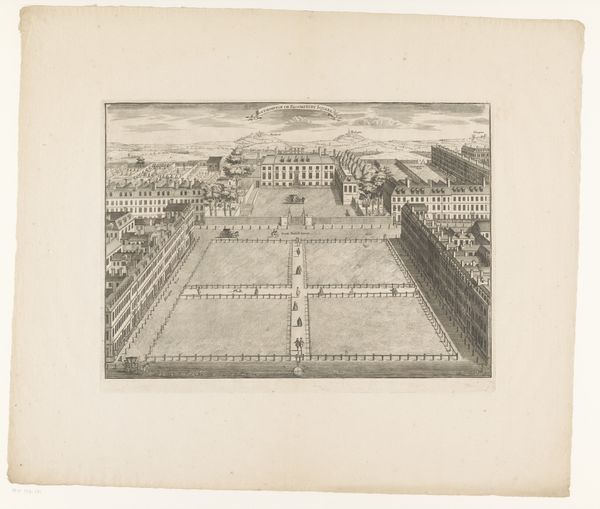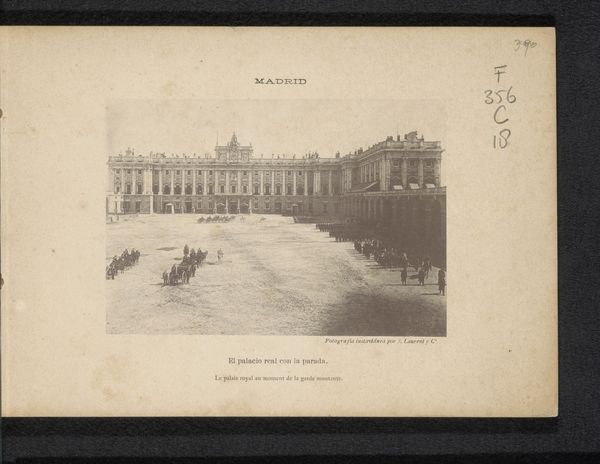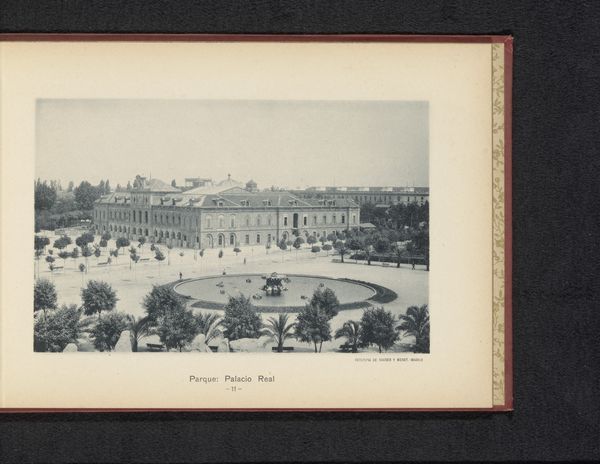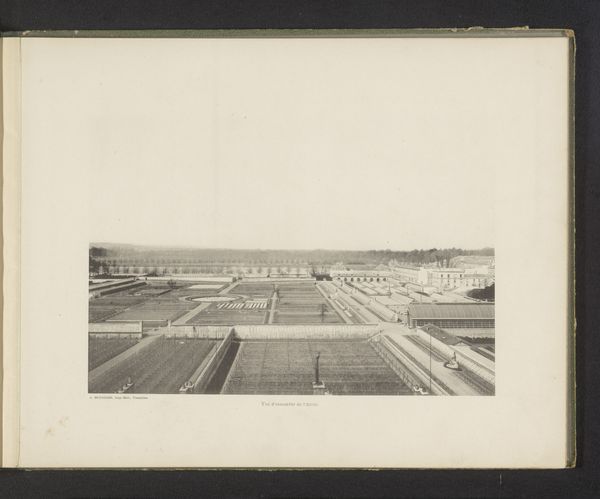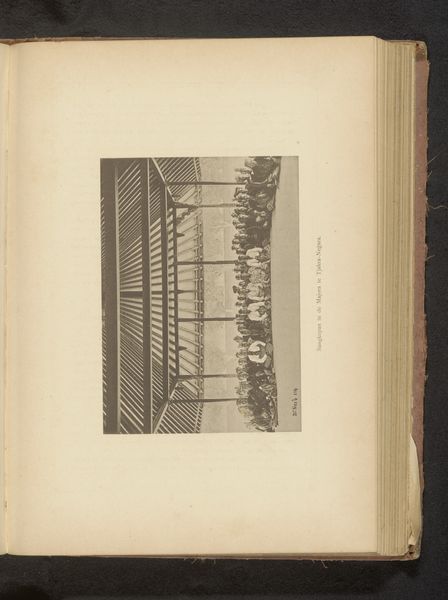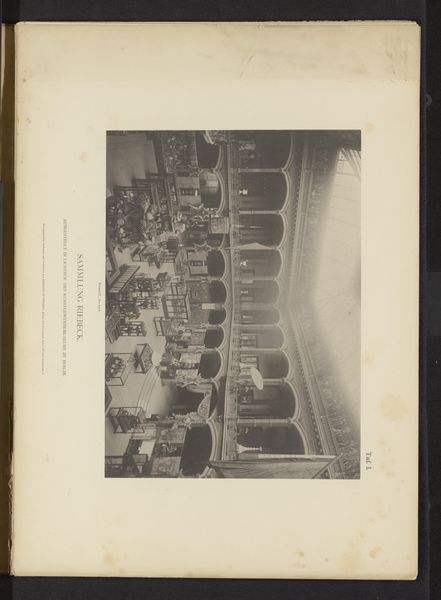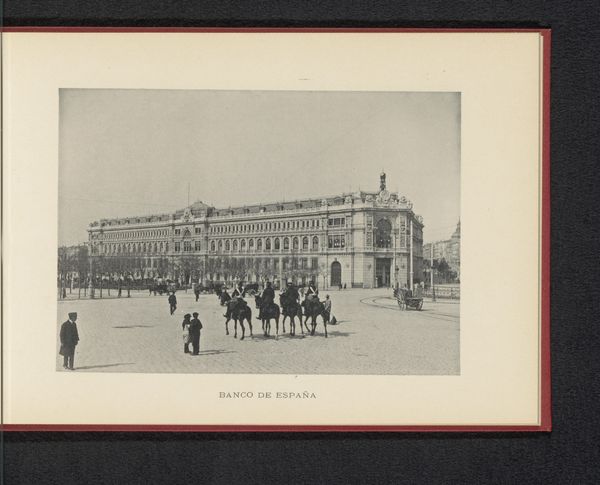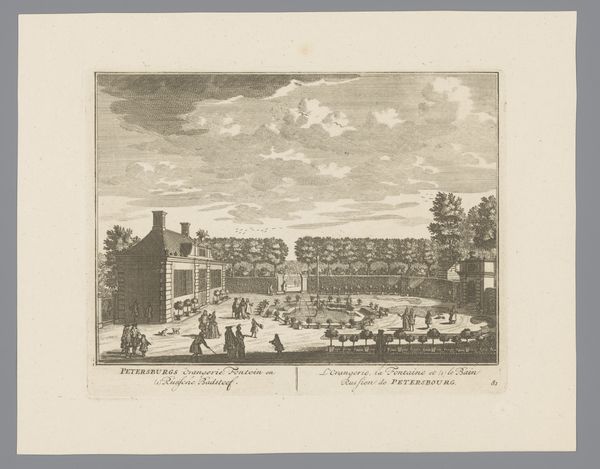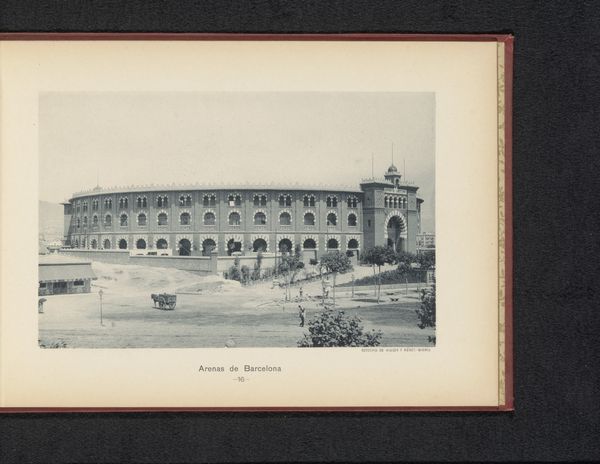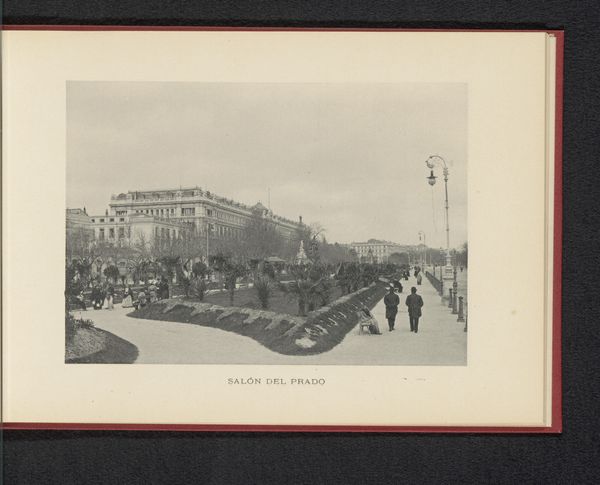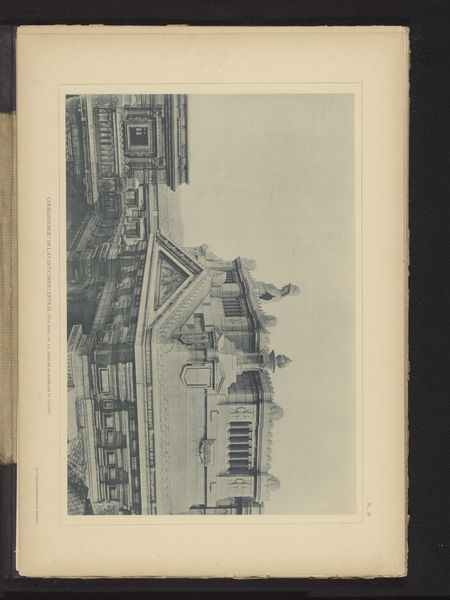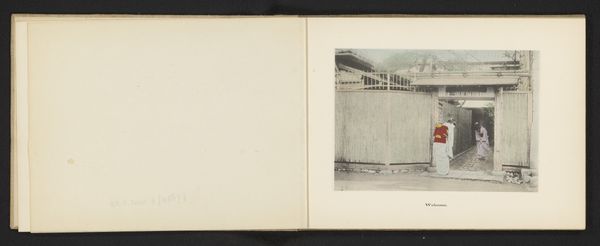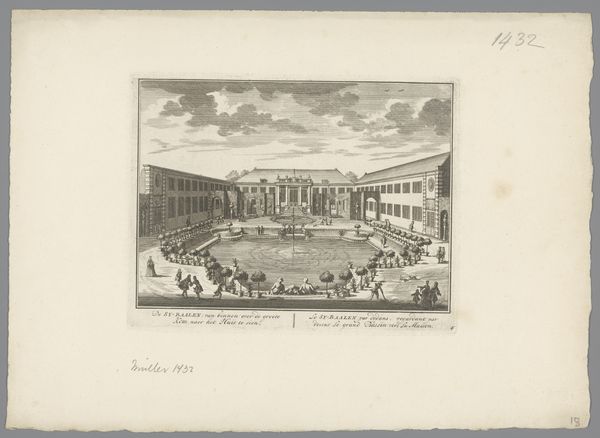
Banderillero's in gevecht met een stier in de stierenvechtersarena van Carretera de Aragon te Madrid c. 1880 - 1890
0:00
0:00
print, photography
# print
#
landscape
#
photography
#
orientalism
#
genre-painting
#
realism
Dimensions: height 92 mm, width 144 mm
Copyright: Rijks Museum: Open Domain
Editor: So, this photograph, taken by Juan Laurent around 1880-1890, depicts a bullfight at the Carretera de Aragon arena in Madrid. It’s printed, a medium that democratizes art. I’m immediately struck by the starkness of the scene and the crowd, how do you approach this work? Curator: Focusing on its materiality and production reveals compelling aspects. The albumen print itself signifies a particular social context: the rise of photography as a commercial and documentary tool. Think about the labor involved - from preparing the chemicals to the act of staging and capturing the image of this spectacle, this labour is an unseen commodity here. Editor: So you're saying the photograph isn't just documenting the event, it's also an object with its own history of production and labor? How does that shape our understanding? Curator: Precisely! We must question: Who commissioned this photograph, and why? Who was the intended audience, and how did this image circulate within society? Photography like this made bullfighting accessible beyond Madrid and even Spain; but whose stories and exploitation are being abstracted into the spectacle? Editor: That's fascinating. It changes how I see the image; the production becomes part of the story. But what about the "artistic" elements? Is this "art," if it is largely documentation? Curator: Let's rethink that hierarchy. This photograph disrupts that binary. The act of framing, of choosing this specific moment within the bullfight, this speaks volumes about intent. The materiality challenges that boundary between "art" and "document". Also consider, who owned cameras, or purchased prints? What are we consuming, today, as we look back? Editor: I never thought about photography that way before, thinking of it as a commodity embedded in a social process. I am beginning to consider other perspectives and to consider what labor created the spectacle in view, not just the photographic image. Curator: Exactly! It moves us to consider art’s role in documenting —and creating – specific historical narratives while simultaneously being an artefact itself.
Comments
No comments
Be the first to comment and join the conversation on the ultimate creative platform.
